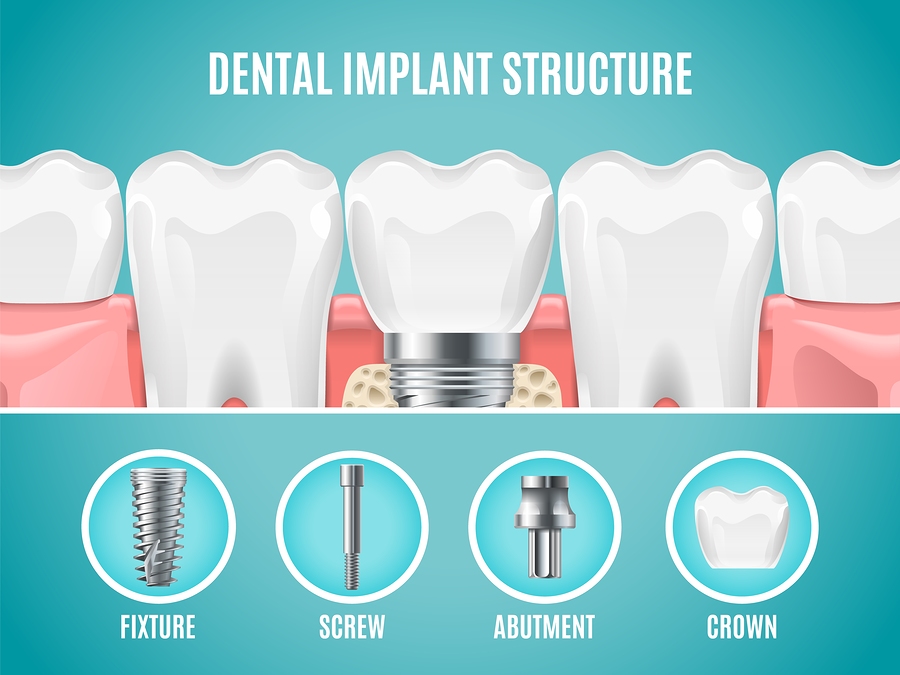The 20-Second Trick For Dental Sense
The 20-Second Trick For Dental Sense
Blog Article
The Only Guide for Dental Sense
Table of ContentsRumored Buzz on Dental SenseUnknown Facts About Dental SenseLittle Known Facts About Dental Sense.The Greatest Guide To Dental Sense
are medical tools surgically dental implanted into the jaw to bring back an individual's ability to eat or their look. They offer support for fabricated (fake) teeth, such as crowns, bridges, or dentures. When a tooth is shed as a result of injury or disease, an individual can experience difficulties such as quick bone loss, malfunctioning speech, or modifications to chewing patterns that cause discomfort.Dental implant systems consist of an oral implant body and oral implant joint and may also consist of an abutment addiction screw. Wisdom tooth cavity. The dental implant body is surgically inserted in the jawbone in place of the tooth's origin. The dental implant abutment is usually connected to the dental implant body by the joint fixation screw and extends through gum tissues right into the mouth to support the connected artificial teeth
(https://hubpages.com/@dentalsense1)Structure of The Oral Implant System choosing dental implants, speak with your oral company regarding the potential benefits and threats, and whether you are a prospect for the procedure. Points to think about: Your general wellness is a vital element in establishing whether you are a good candidate for dental implants, the length of time it will require to recover, and just how long the implant might remain in place.
Smoking might influence the recovery procedure and reduce the long-term success of the dental implant. The recovery procedure for the implant body might take numerous months or longer, during which time you usually have a short-term abutment instead of the tooth. the oral implant procedure: Very carefully comply with the oral health guidelines offered to you by your dental company.
Some Of Dental Sense
Implant failure can lead to the requirement for an additional surgery to take care of or replace the implant system. Recovers the ability to chew Restores aesthetic look Helps keep the jawbone from reducing as a result of bone loss Maintains the health of the bordering bone and gum tissues Assists maintain nearby (close-by) teeth stable Enhances top quality of life Damages to bordering all-natural teeth throughout dental implant positioning Injury to the surrounding cells during surgery, such as sinus opening Injury throughout surgery (for example, crack of surrounding jawbone) Inadequate feature, such as seeming like the teeth do not attack together generally An experience that the tooth is loose or twisting in position resulting from an abutment screw loosening Implant body failure (looseness of the implant body) as a result of systemic infection, which might be more probable in patients with uncontrolled diabetes due to regional infection in bone and gum tissues supporting the implant body because of delayed recovery, which may be more probable in individuals who smoke Trouble cleansing the gum tissues around the implant, leading to poor dental health Neglected periodontal disease Post-surgical numbness due to nerve impingement or damages Constantly notify health and wellness care carriers and imaging specialists that you have dental implants prior to any type of magnetic resonance imaging (MRI) or x-ray treatments.
FDA is not aware of any kind of adverse occasions reported for MRI or x-ray procedures with oral implants. Oral implants systems are usually made of products that comply with global agreement requirements of the International Organization for Standardization (ISO) or ASTM International. These requirements have details of what makes a safe material.

A dental implant is a framework that changes a missing tooth. With screw-like devices, the surgeon inserts an implant right into the jawbone, and it acts as a support for an artificial tooth, called a crown.
Getting My Dental Sense To Work
Some people are not qualified for dental implant surgery. It is for dental cosmetic surgeons to run on people with: acute illnessuncontrollable metabolic diseasebone or soft cells disease or infectionIf these problems are dealt with, an individual can have the surgical treatment. In, dental cosmetic surgeons avoid operating people with: If individuals with any of the above undergo oral implant surgical procedure, there is a greater risk of the implant stopping working.

Dental implant surgery is a tailored process. It's not the same for every person. Yet the complying with offers a basic summary of what you can anticipate your dental professional, oral cosmetic surgeon, periodontist or prosthodontist to do: Place the dental implant surgically. Provide you time to recover. Connect the post and final crown, bridge or denture.
Next off, your cosmetic surgeon will meticulously position the dental implant into your jaw. Finally, your doctor will certainly reposition your gum tissues and close the cut with stitches. If your dental implant is near the front of your mouth, your dental expert will certainly make a short-term tooth for you to wear up until you recover. This way, you will not have a void in your smile while you recover.
What Does Dental Sense Mean?
During the healing stage, your jawbone must fuse to the dental implant. This process can take anywhere from 3 to nine months.
When your dental implant heals, your dental professional can attach the abutment (small connector message) and your last reconstruction (crown, bridge or denture). This generally takes about one hour to finish and might call for a 2nd small surgical treatment. You shouldn't really feel any discomfort during your dental implant treatment due why not check here to the fact that your service provider will certainly make use of medication to numb your gum tissues.
Report this page